Spanish Travel Bureau

My Grandfather Joaquin Bosch was born near Valencia in 1883. The family moved to Marseille in the late 19th century and opened a factory making metal
and wooden bedsteads:
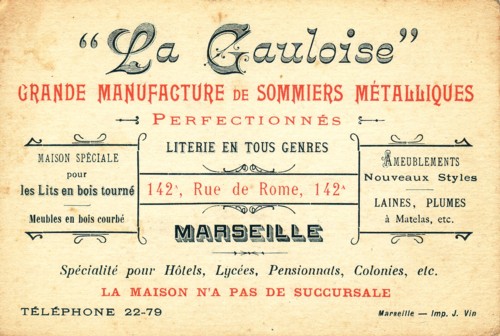
He moved to Britain in the early 1900s to seek his fortune. During the First World War he was the British correspondent for Las Noticias, a Spanish newspaper:
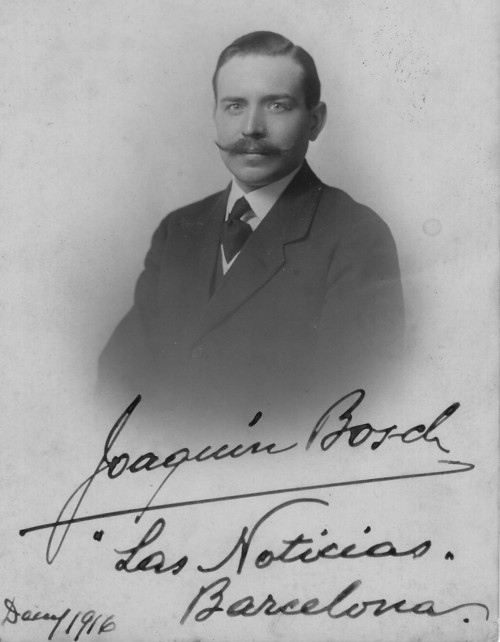
He opened the Spanish Travel Bureau after the war. It had a number of addresses over the following decades, all in central London.
He advertised regularly in The Times from 1921 to 1930. A selection follows, starting with the first appearance in March 1921:
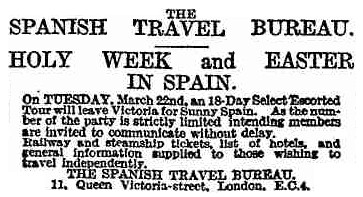
1922

This records the dissolution of a business partnership between my grandfather and Will Brett, his brother-in-law, presumably leading to the incorporation of the agency
as a limited company:
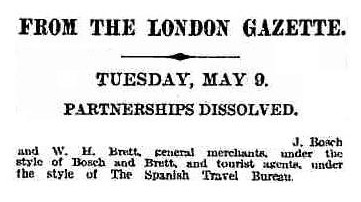
1923
New address:

New address again:

1926
Moved to Regent Street in August. This advert appeared in a 32-page Spanish-language supplement to The Times, 10 August 1926:
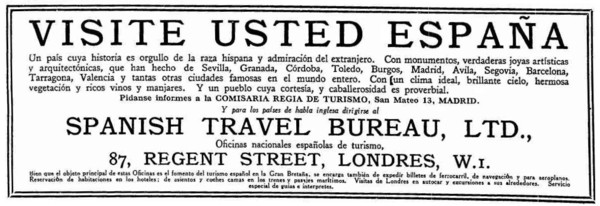
October:

December:

1927
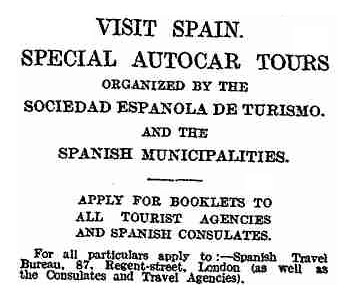
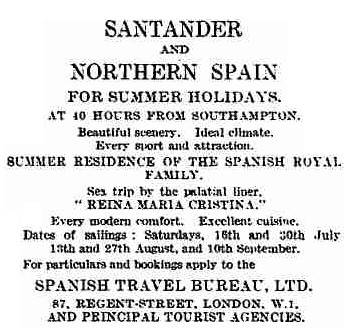
The Reina Maria Cristina was a passenger vessel built by William Denny & Brothers, Dumbarton, and launched in 1888. Owned by the Compania Transatlantica Española,
Barcelona, it was scrapped in 1931. With a length of just 408 feet and gross displacement of 4,380 tons it was hardly a "palatial liner". (In comparison the Queen Mary was 1,020 feet in
length and 82,000 tons displacement).
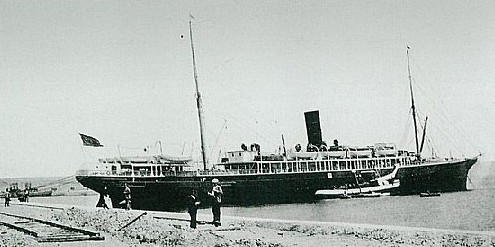
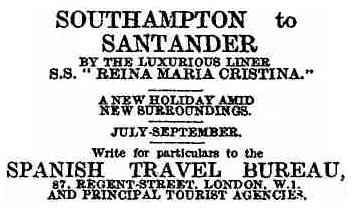
The 1929 International Exhibition was a major event, with publicity starting in 1927:
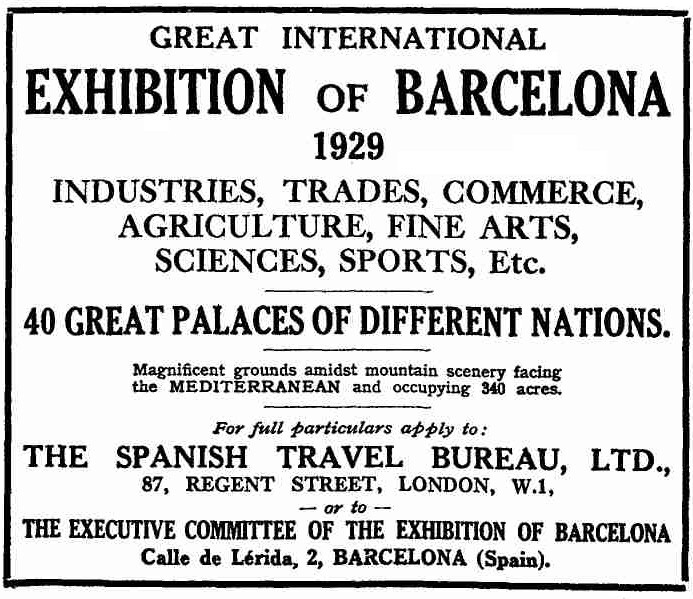
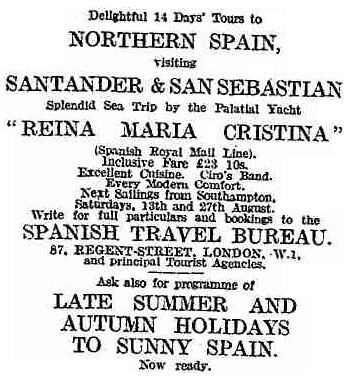
1928
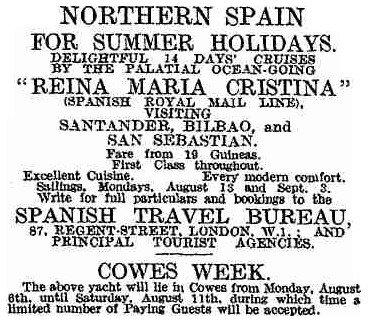
1929

Advertisements were generally small column-width boxes, the exception being this quarter-page in April for the exhibition (note another address):


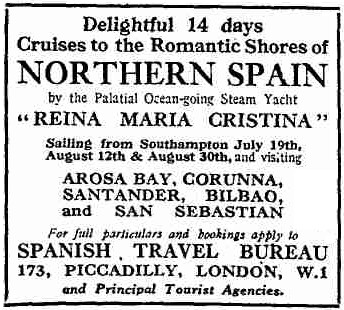
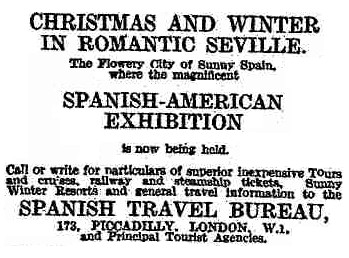
1930
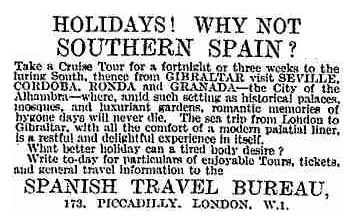
Advertisements continued to appeared regularly until the last one on 26 September 1930. The political stability of the country under the dictatorship of General Primo de
Rivera from 1923 came to an end with his disposition in 1930, followed by the forced abdication of King Alfonso XIII (who had supported the dictatorship) in 1931 and the declaration of the Second
Republic. Spanish politics were becoming increasingly polarised, ultimately leading to the civil war, and presumably tourism suffered severely.
1933
After a gap of two and a half years four insertions appeared in May 1933:

followed by this one in 1953 (which might have been a totally unconnected business with the same name):
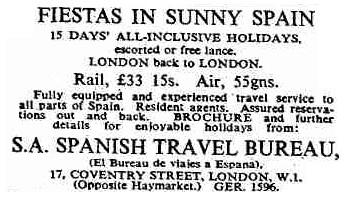
Spanish Tourist Service
1934
The Spanish Travel Bureau re-emerged as the Spanish Tourist Service, now as part of Pickfords, the removals firm that had established a travel subsidiary in 1922. Three advertisements
apeared in The Times in November and December 1934, then intermittently from August 1950 to September 1959. Civil unrest started with the suppression of the miners by the army under General Franco
in 1934, building up to the Spanish Civil War that lasted from 1936-1939, in turn followed by the Second World War, effectively killing the attraction of Spain as a tourist destination for over a
decade.

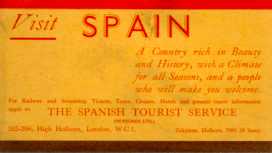
1950

1956

1957

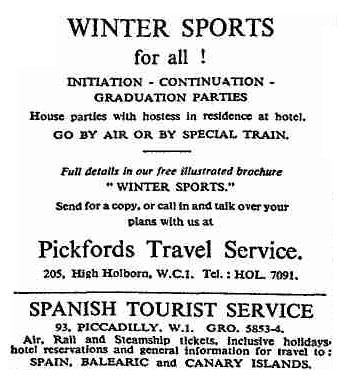
In the last few years of his life my grandfather operated the Spanish Tourist Service from his home in Twickenham. He died in 1963.

The Spanish Club of London
My grandfather was a founder member of the Spanish Club of London in 1920. The property had previously been the private residence of Lord Hailsham, who recounted his
childhood reminiscences at a dinner in 1928.

1928
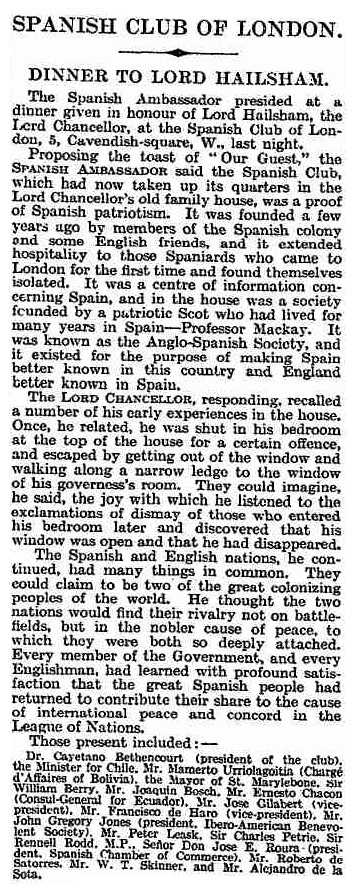
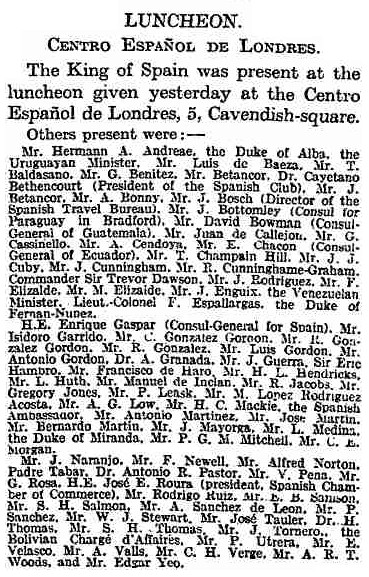
1929
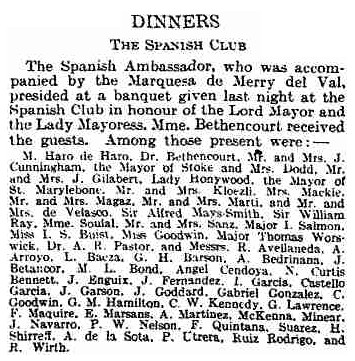
1930
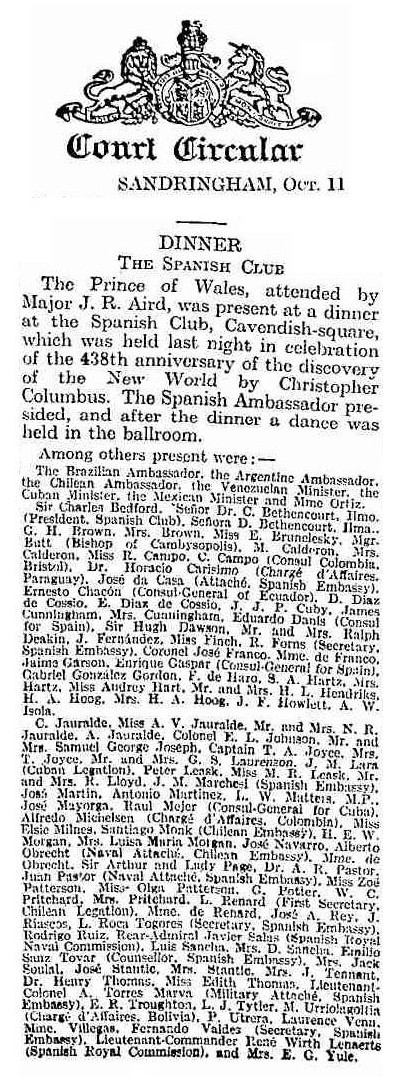
1931
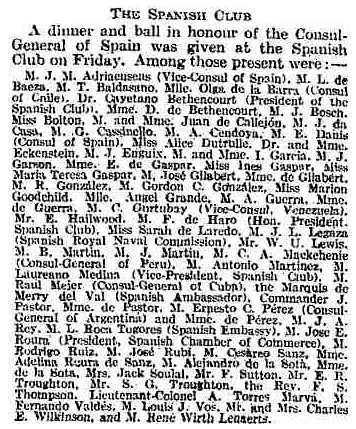
An article in El Pais in 2003 noted that an expensive boutique hotel had appeared following the (presumably recent) dissapearance of the
Spanish Club of London.
Pasado español en el hotel No. 5 de Londres (El Pais, 30 August 2003)
La sede del desaparecido Centro Español de Londres se ha convertido en hotel de lujo y punto de reunión de la élite londinense. Su propietario, Jay
Maggistro, un peluquero y empresario siciliano residente en Gran Bretaña, ha invertido cerca de 40 millones de euros en la restauración del edificio georgiano del
número 5 de Cavendish Square, entre cuyas paredes aún resuenan viejos ecos hispanos. En su gran salón, al que se accede por una majestuosa escalera, la colonia
española recibió a invitados ilustres y controvertidos, entre ellos Miguel de Unamuno o Fidel Castro.
Bautizado simplemente No. 5, el hotel dispone de ocho habitaciones-suites, cuatro bares, un restaurante, sala de puros, salón de lectura y terraza con
vistas a la plaza Cavendish. En los bajos, que antes ocupó la agencia de noticias Efe, funciona ahora una discoteca. Ubicado a corta distancia de Oxford Circus, y abierto a no
residentes, el establecimiento emprendió su última andadura el invierno pasado. En su primera aventura en la hostelería, Maggistro desea que la clientela se sienta
como en casa en cualquier rincón de este edificio de cuatro plantas. Él mismo se encargó de la decoración, y su gusto por la extravagancia, la belleza y el
lujo se refleja en el interior del local. Rebuscó entre marchantes de antigüedades hasta dar con el mueble o chandelier que encajaran en este edificio de época.
También conserva piezas originales del siglo XVIII enmarcadas entre paredes repintadas en colores fuertes. El efecto es, en su conjunto, grandioso, con cierta tendencia al
kistch.
Los precios de las habitaciones rondan los 450 euros y llegan a 920, mientras que una cena en su restaurante estelar rara vez bajará de los 100 euros por persona.

El bar del hotel No. 5, en Londres
The hotel web site noted that the premises were a Grade II listed building, and formerly the Spanish Embassy. The hotel has now closed.
Colleagues
Two Spanish friends of my grandfather were often mentioned. Both were members of the Spanish Club of London.
Antonio Martinez owned a Spanish restaurant at 25 Swallow Street, just off Piccadilly Circus. In the 1920s he decorated it in Andalucian style using authentic
Spanish tiles. Clientelle included the King of Spain:
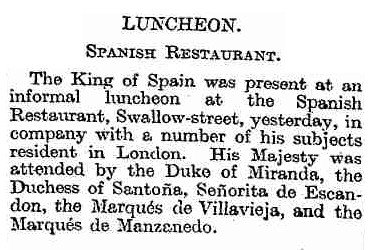
It was still runnng in the 1970s; the business of Martinez Spanish Restaurant was finally dissolved in 1991. Today the premises are occupied by
the Gaucho Piccadilly, an Argentinian restaurant. A private dining room still displays the tiling:
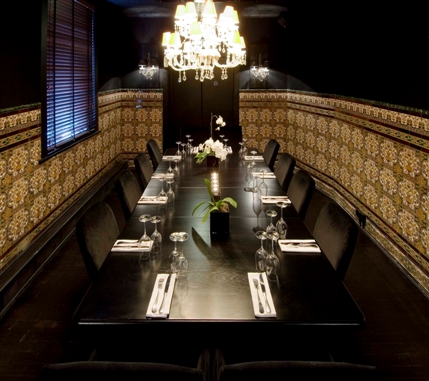
Pablo Utrera owned Solo Orchards, an orange juice business.

In 1960 Idris Ltd., the soft drinks firm, acquired the whole of the issued share capital of Solo Orchards ("A small but well-known company making quality
products") for a consideration of 143,500 ord. 5s. shares in the company, worth £130,000. By April 1962 Idris had disposed of the Totteridge (Barnet, north London) premises of
Solo Orchards, moving production to other factories.
Photographs
The Spanish Travel Bureau outer office. The inner office can be seen through the glass window.
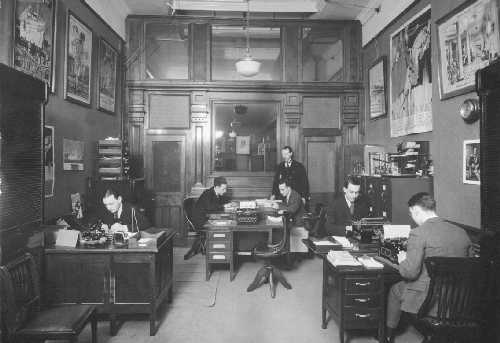
Inner office
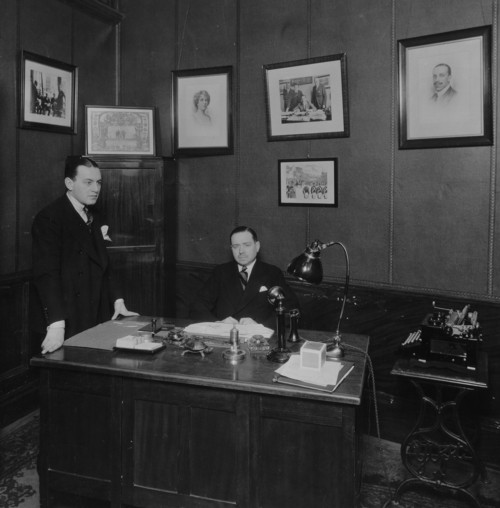
Exterior of the 87 Regent Street office. Kent House is still there.

King Alfonso visiting Spanish Travel Bureau office to sign my grandfather's appointment as official London representative of the Patronato Nacional de Turismo, a
quasi-diplomatic post. My grandfather was instrumental in the formation by the Spanish government of the Patronato Nacional de Turismo by Royal Decree in 1928.
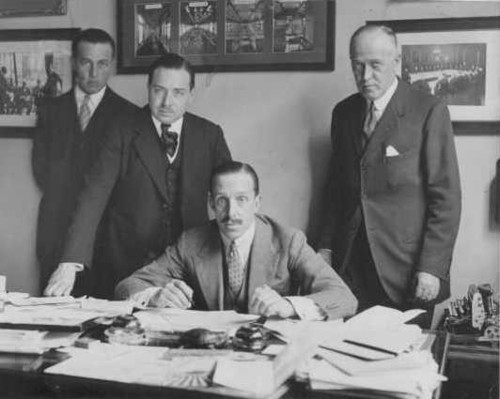
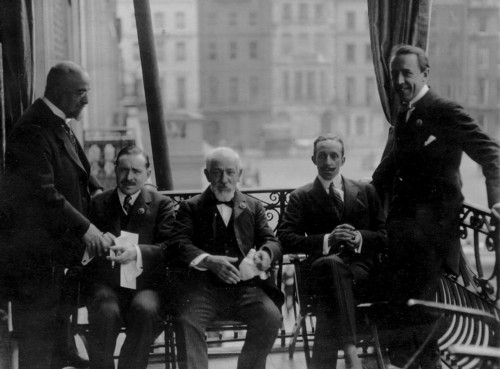
In the head office of the Automobile Association, London, at the time of the signing of an agreement providing for the AA to assist Spain organise the Spanish "Real
Club de Automobiles", an agreement my grandfather promoted.

Seeing off some early Spanish aviators.

Dinner in Spain.
